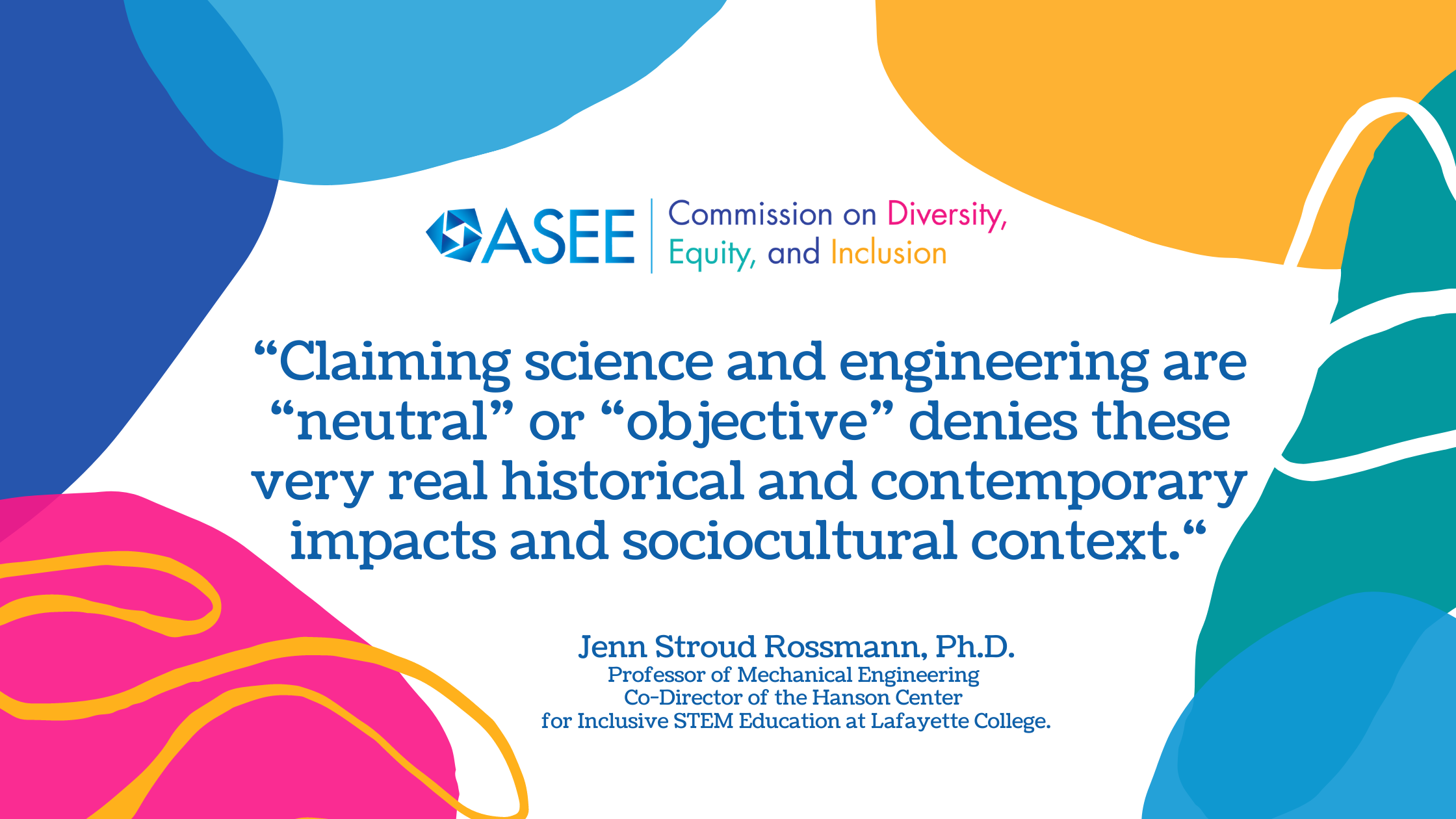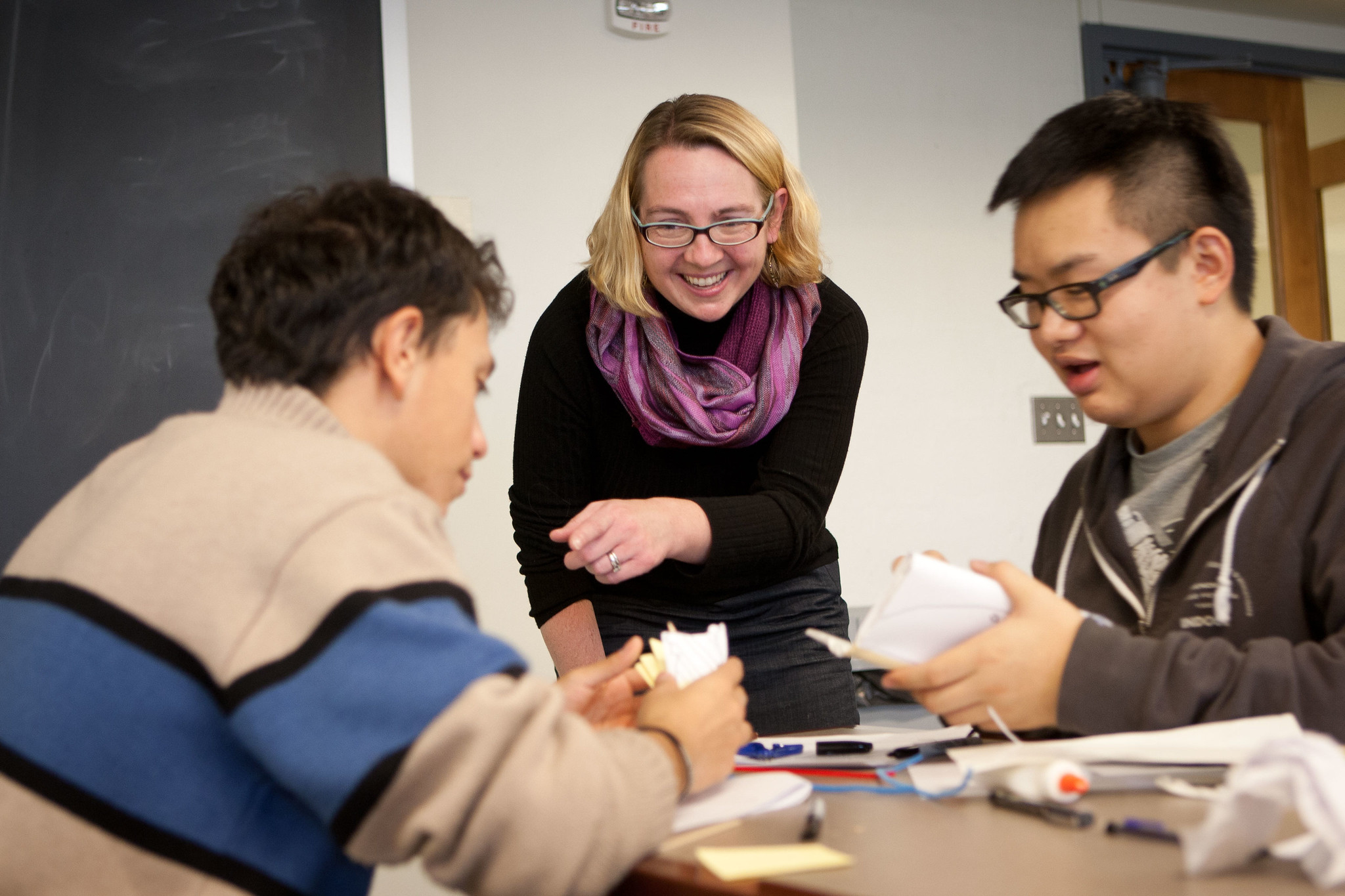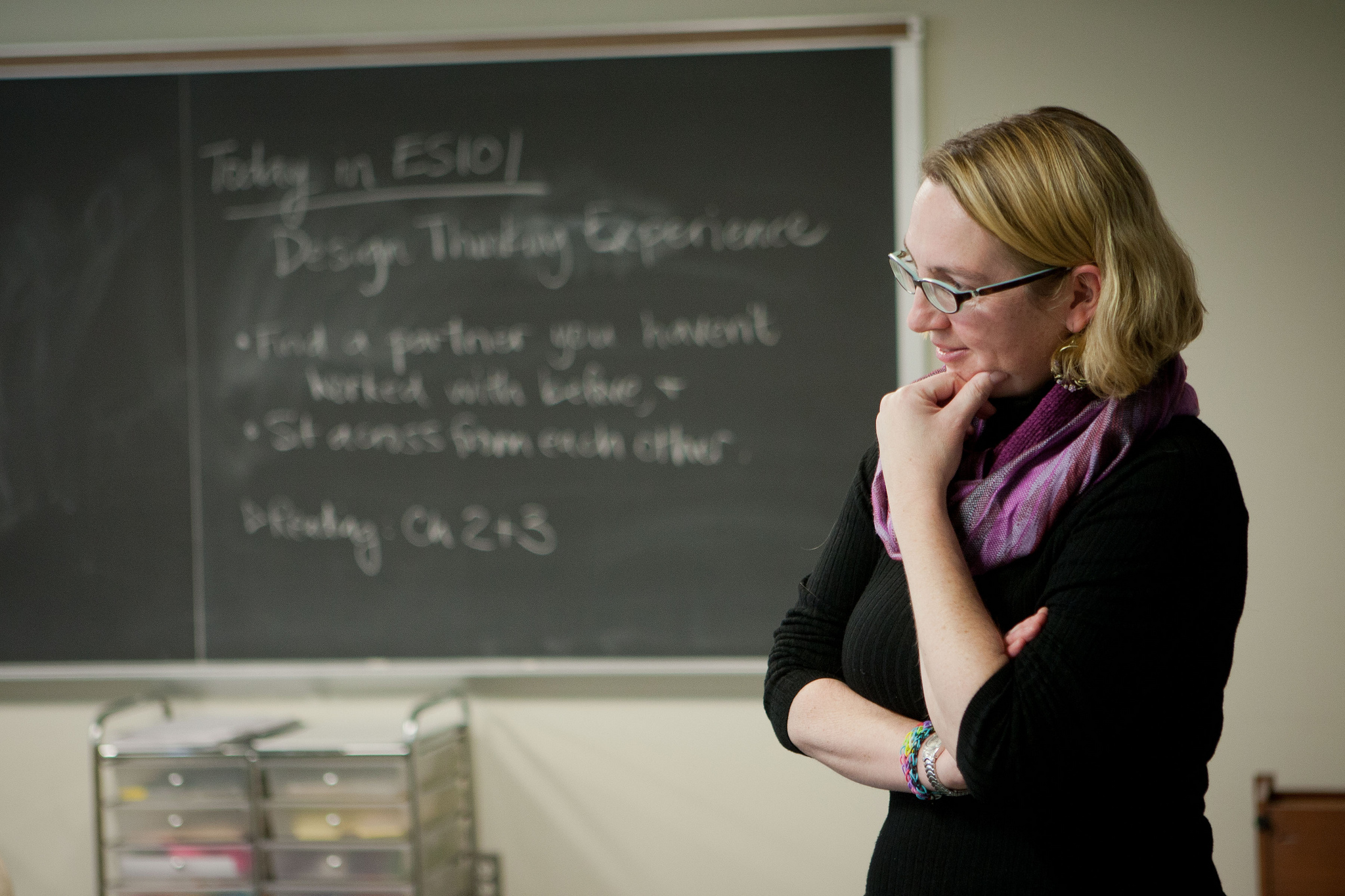Remolding the World Together
By Jenn Stroud Rossmann, Ph.D.
Jenn Stroud Rossmann is Professor of Mechanical Engineering and Co-Director of the Hanson Center for Inclusive STEM Education at Lafayette College. She shares her thoughts on how to foster more inclusive ecosystems in STEM.
Inclusive classrooms acknowledge and value the individuality and identities of each person present; and acknowledge that knowledge is constructed by individual humans, too. James Baldwin’s “A Talk to Teachers” suggests that educators should help our students understand that the world was molded by people in the past, and they have the power to remold it into something new. For me, including these histories and critiquing the ways that humans have developed science and engineering knowledge is about showing students they too will have this power to re-mold the culture they’re part of and to be makers of new knowledge.
Sometimes, STEM educators pretend our disciplines are “neutral,” “apolitical,” “objective” bodies of knowledge, in the manner of those who claim racial “color-blindness.” But this denies the humanity of the people who do STEM — our flaws and biases, as well as our capacity for empathy and collaboration.

And the thing is, science and engineering are NOT neutral: they are value-laden. They have the politics of the people who have done the work, and of the systems in which those people live and work, embedded in them. There are many examples of this non-neutrality doing great harm: medical exploitation of non consenting Black women from the “patients” of J. Marion Sims to Henrietta Lacks; or the urban planning that used eminent domain to build freeways through communities of color. Many engineering triumphs have relied on extractive and exploitative practices — coal to make the railroads run, labor to run rail across a continent on land seized from indigenous people.
Claiming science and engineering are “neutral” or “objective” denies these very real historical and contemporary impacts and sociocultural context. Even worse: because of the traditional dominance of white men in these fields, what is deemed a “neutral” or “universal” practice or space is actually white and male. Erin Cech and others have shown that this asserted neutrality, or “depoliticization,” can contribute to marginalization, as well.
Our fields aren’t neutral. Our classrooms, labs, and design studios aren’t neutral spaces. We should acknowledge the people, the politics, and sometimes the problematic stuff in them, as well as what’s happening beyond our walls. Once we recognize that engineering processes and products can be value laden, we have a chance of embedding in them the values we desire, such as anti-racism, sustainability, and social justice.
Engineering design starts with empathy for the people you hope to help, and that empathy includes having an understanding of the social, economic, and political systems those people exist within: all the secondary and tertiary stakeholders in the potential success of a designed sociotechnical intervention. Teaching and learning in an interdisciplinary liberal arts environment helps develop the ability to imagine both technical wizardry and systemic complexity, and to collaborate when you can appreciate both the value of other kinds of expertise and the limits of your own.
I love the question, “How might we…” as an empowering, liberating invitation to collaborate in design — I like to make sure my students are also asking “who could benefit” and “who could be harmed” along the way too.

ME Professor Jenn Rossmann listens and watches as students engage in a partner exercise in ES101
Creating an inclusive ecosystem
I’m very proud to have contributed to the envisioning of, and now to be co-directing, Lafayette’s Hanson Center for Inclusive STEM Education. The need for Inclusive STEM Education is of course responding to the long history of Exclusive STEM Education, which includes things like so-called “gateway” (sometimes “weed-out”) classes, and a culture that can feel at best unwelcoming and at worst toxic. Many laudable efforts have focused on the problem of the “pipeline,” an insufficient supply of students from historically marginalized backgrounds — women, students of color, LGBTQ+ students, and so on. The problem of the pipeline, though, is that “pipeline” is a problem: it suggests that there’s only one way to travel passively to a singular endpoint. It’s a rigid, conformity-based metaphor.
So our work as a Center for Inclusive STEM Education is about creating an ecosystem whose diversity is essential to the thriving of both each individual and the system at large. Instead of equipping people with protective gear for a situation we expect to be hazardous, we are changing the environment itself to be one in which they feel a sense of belonging and agency.
Envisioning the Center was a collaborative conversation among many faculty members – from engineering to women’s, gender, & sexuality studies – and implementing that vision involves partnership with student life, our College’s excellent teaching & learning Center, and others committed to a more inclusive ecosystem in which students, faculty, and staff from all backgrounds can flourish.
The Center’s mission to advance our practices and our understanding of equity and inclusion in STEM is threefold, coordinating: (1) student and faculty support — including a summer transition program developed by my co-director, Professor Chawne Kimber, as well as peer and cohort mentoring; (2) faculty development — helping faculty develop, practice, and assess their inclusive pedagogical techniques, and review their curricula; and (3) research and curriculum development in STS, studying STEM practices and products with sociological, gender and ethnic studies, historical, and other lenses.
I’m excited to share some of this work at the 2021 ASEE meeting!
About the Author

Professor Rossmann leads an ES101 exercise.
Jenn Stroud Rossmann is Professor of Mechanical Engineering and Co-Director of the Hanson Center for Inclusive STEM Education at Lafayette College. She earned her BS in mechanical engineering and PhD in applied physics from the University of California, Berkeley. Prior to joining Lafayette, she was a faculty member at Harvey Mudd College. Her scholarly interests include the fluid dynamics of blood in vessels affected by atherosclerosis and aneurysm, the cultural history of technology, and the aerodynamics of sports projectiles. She is an advocate for interdisciplinarity and inclusion. Rossmann has co-authored two textbooks on continuum mechanics and writes the column “An engineer reads a novel” at Public Books.
Connect with our guest blogger:
Do you want to become a guest blogger?
CDEI Guest Blog highlight future events, describe best practices, or share calls to action by CDEI members. We invite you to propose posts that share brief research highlights, reports of impactful initiatives, critical thought pieces, and resources you find useful. We especially encourage emerging scholars to share their work. If you are interested in sharing a blog or resource post, you may submit your proposal here. All posts are screened and edited.

